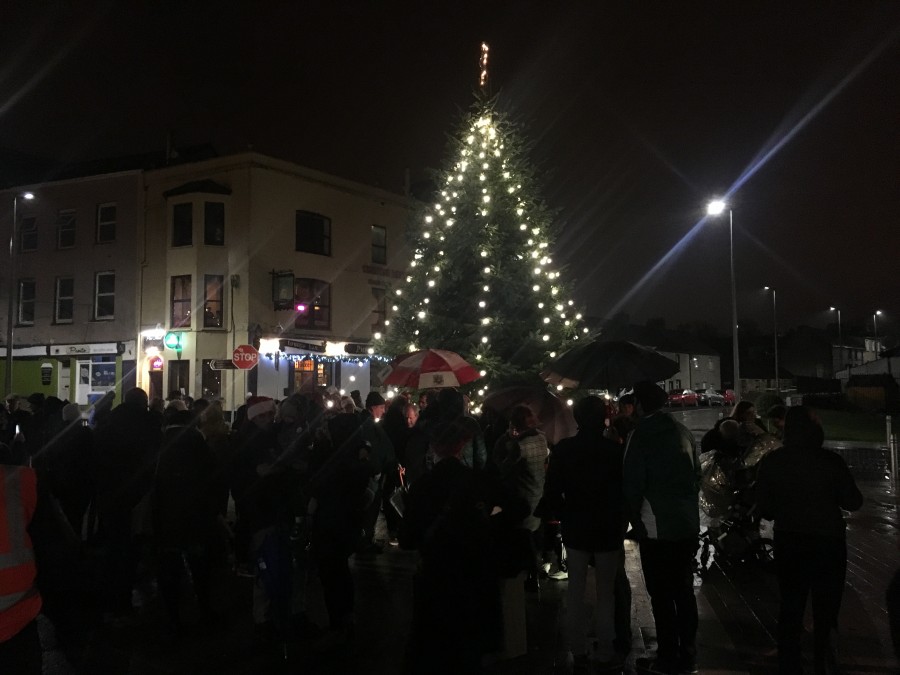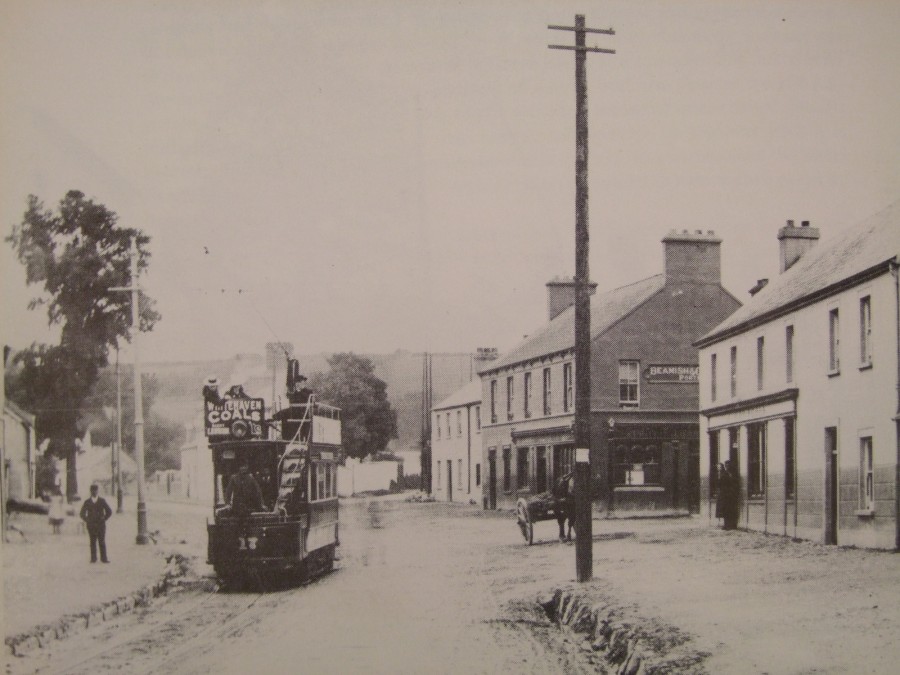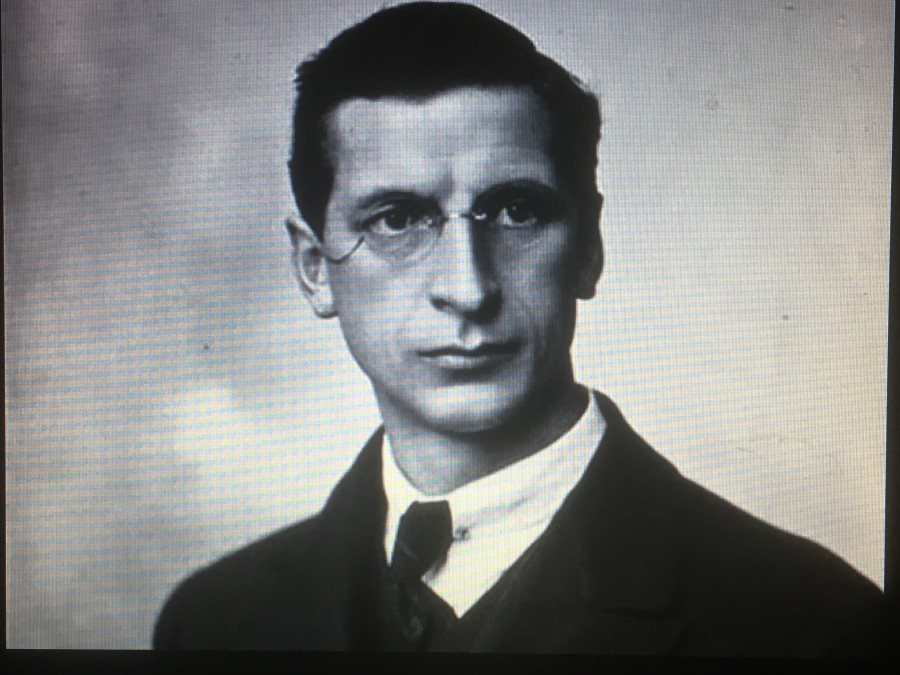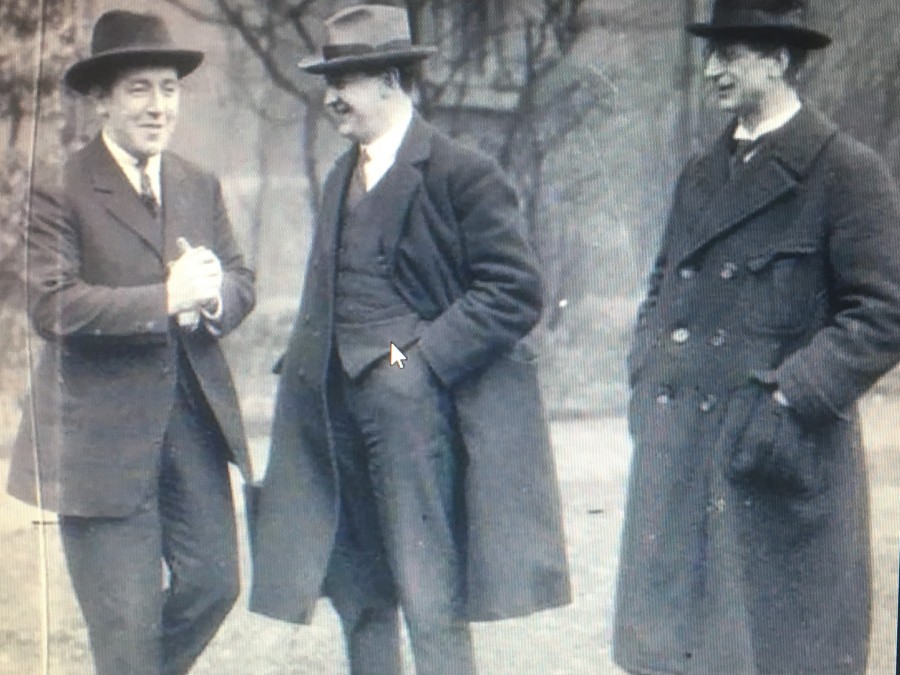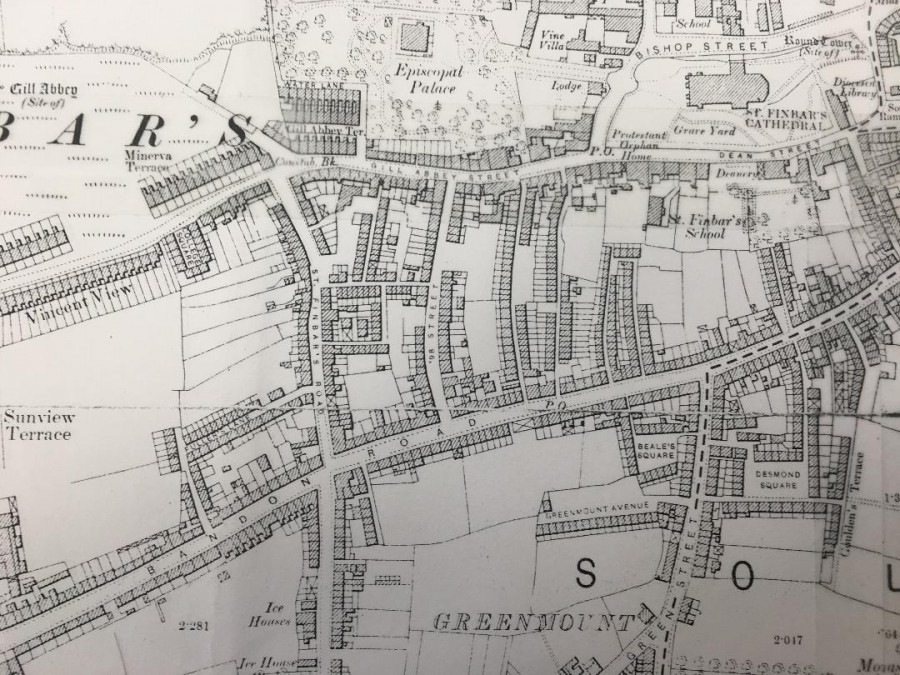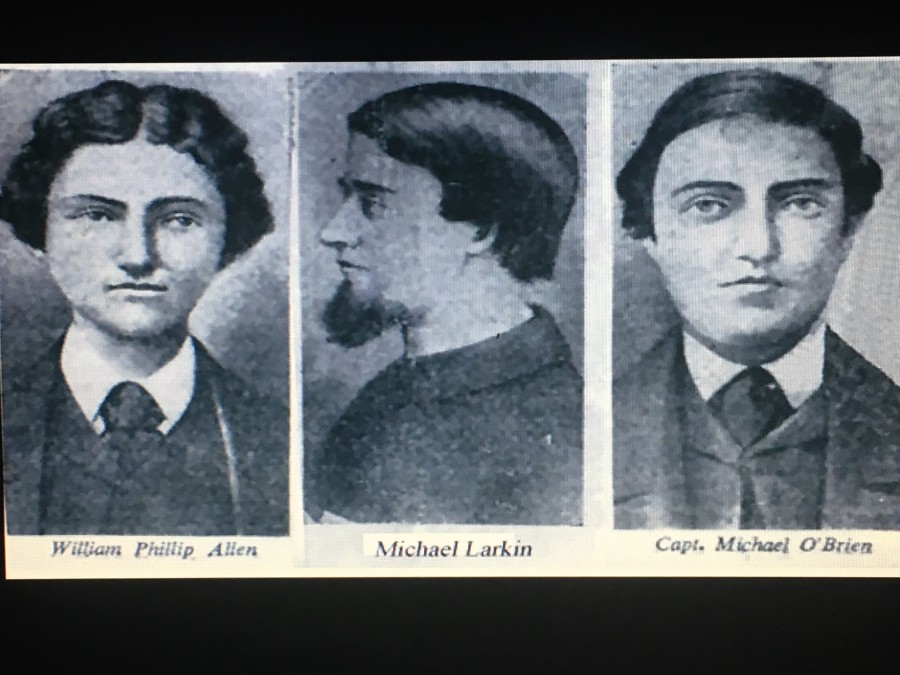Kieran’s Our City, Our Town, 21 December 2017
Kieran’s Our City, Our Town Article,
Cork Independent, 21 December 2017
The Wheels of 1917: A Hurricane in Cork
In the early hours of Sunday morning 16 December 1917, a storm of terrific force broke over the Cork region. One hundred years ago, the newspaper coverage in the Cork Examiner reveals a damaged city much like that from Storm Ophelia several weeks ago. In our time the coverage gives insights into the smaller important geographical features of the city a century ago, which sometime remain hidden in the record of local history through being taken for granted.
The storm came first from NNW and then varying from points north and north-east the wind blew, rapidly passed the half-gale stage, and reached hurricane strength. The weather report records that it was intensely cold. With the advent of the storm numerous houses, out offices and other buildings suffered damage with roofs being stripped of slates and tiles, and sheds being, in many cases removed of firmly-fastened corrugated iron coverings. During the morning and well into the day falling slates in nearly all parts of the city were a source of considerable danger, and according to the press, rarely before had slates been torn up in such a manner. The amount of damage issued by the breaking of glass was also significant. It affected the narrow streets more than the large thoroughfares – many valuable, pieces of plate glass were broken by falling debris during the day.
In the wooded districts on the outskirts of the city many trees were uprooted and felled while the havoc to which telegraphic and telephone connections were made to were severe. Boats in the river and harbour tied up to moorings broke away in several instances, while others were swamped and submerged. Night watches on ships at anchor and alongside wharves were kept on the alert through the night and morning. The tides too were at their highest in the month and lashed rough and breaking water. This rendered difficult and dangerous the task of securing tenders and boating at the quayside and on the river. Comparatively little rain fell during the early evening of day. Towards the evening the wind moderated just a little but came on again with renewed drive as the dark set in.
Some extraordinary escapes from injury were recorded by falling masonry and flying slates. In Douglas Street a little girl turning a corner was suddenly struck by the full force of the gale and driven backward into the footpath. This probably saved her life. For at the same instant a heavy roof slate smashed itself into fragments falling right where the child had been. After holding on through the night against the fierce onslaught of the elements the flagstaff on the tramway standard in front of the Recruiting Office in St Patrick’s Street, from which the Stars and Stripes and the Union Jack had been flying, was smashed a little after noon. The flags fell to the ground.
Wooden hoardings in the different parts of the city suffered much damage. Those on the Western Road at the entrance to the Cork Muskerry Railway terminus were almost destroyed. Near the Cork, Blackrock and Passage Station at Albert Street, hoardings were also partially blown down by the wind. In the Cork Athletic Grounds the damage done to similar constructions was extensive. Here also breaches were made in several parts of the enclosure, particularly on the east side. Hurling matches arranged to be played at these grounds had to be abandoned. The ground of the Greenmount National School suffered to some extent, the railing boards of the western side being stripped from their iron supports.
The glass roof of the Electric Power House and Tram Car Shed on Albert Road was smashed in many places, but the city tram services were not disrupted. In the roofs of houses in the south side of the city large holes, some many square feet in size, were caused by the forcible removal of slates by the gale.
Gas lamps in many city streets were extinguished, rendering pedestrianism in places difficult and dangerous. In the vicinity of St Luke’s Cross, some of the residents had a narrow escape from what might have been serious accidents owing to the collapse of the upper portion of a lamp post, which fell across the roadway.
The absence of hackney cars on the streets, especially covered vehicles, was also noticeable. Drivers had reason and experience early in the day for taking this step – there being imminent danger of accidents in the more exposed hazards of the city’s open spaces and wind tunnelled street areas.
During the day upward of a dozen persons were treated at the city infirmaries for injuries caused by slates, masonry, glass and some falls. They were nearly all however, of a minor nature and did not require people staying overnight at infirmaries. Ten were scalp wounds, and cuts on arms and faces but there were two cases of fractured arms. An abatement in the force of the wind set in the hours that followed.
Happy Christmas and Happy New Year to all readers of the column – if you missed one of the columns this year, check out the Our City, Our Town column at my website, www.corkheritage.ie. Secret Cork, which is my 2017 book, and published by Amberley Press, is now in Cork bookshops as well as a selection of previous books.
Captions:
926a. Tram leaving Douglas Village, c.1900 (source: Tram Tracks Through Cork by Walter McGrath)
926b. Tram outside Electric Power House and Tram Car Shed on Albert Road, c.1900 (source: Tram Tracks Through Cork by Walter McGrath)
Half a Million Euros generated from Decaying Kinsale Road Landfill, December 2017
Cllr Kieran McCarthy has welcomed the dividend return on the sale of electricity from the decaying old landfill, now Tramore Valley Park. Over the past three years the cumulative income from the sale of electricity from the site is approximately €565,000. The cumulative expenditure to date on the project is in the region of €610,000.
The Director of Services for Environment and Recreation and Amenity David Joyce informed Cllr McCarthy at last week’s City Council meeting after he asked the question about future funding for the park. This site will be for sometime still to come, subject to an EPA license. One of the conditions of the EPA License is the need to process the gas being produced by the degradation of the landfill matter under the capping material. The decision to generate electricity at TVP from the landfill gasses was a direct result of this requirement. Generating electricity from this gas is a much better environmental alternative to just simply flaring to the atmosphere. Procurement processes were undertaken, which involved the hiring of a suitable ‘engine‘ and the sale of the electricity generated. These contracts covered the initiation of the electricity-generation process, management of the process and provision of planned preventative maintenance (PPM) on the system (engine, pumps, pipelines, SCADA etc) as well as the purchase the electricity from the City Council (Vayu).
Cllr McCarthy noted: “this is a great European best practice example of sustainable land use. The income generated to date from the sale of the electricity have gone towards the capital costs associated with the setting up and maintenance of the infrastructure and hardware required for the electricity generation. It is anticipated that during 20l8 the project capital costs will be fully repaid and that going forward the income from the sale of electricity will be put towards the ongoing costs associated with the maintenance of the equipment”.
It is important to note that the quantity and quality of the gasses at the site are already falling and as such the annual income to the City Council will decrease year on year at a rate yet to be identified. It will thus become uneconomical at some point to continue to produce electricity at the site. It is expected that this point will be reached in the next 3-5 years but given the uncertainty surrounding the prediction of gas quality and quantity these figures are only estimates.
Cllr McCarthy has also put forward Tramore Valley Park and the story of the electricity from the landfill as a best practice sustainable land use example in the EU Urban Agenda as part of his membership on the European Committee of the Regions; he noted “it is great to be able to share this success story with other local authorities from across Europe and learn from other projects; Tramore Valley Park is larger than the sum of its parts; it’s something the City and region can be proud of; I am also heartened to hear that funding has been put aside by Cork City Council to open the park to the public next year”.
Kieran’s Our City, Our Town, 14 December 2017
Kieran’s Our City, Our Town Article,
Cork Independent, 14 December 2017
The Wheels of 1917: DeValera Visits Cork
This week, one hundred years ago, Éamon de Valera made his first appearance in Cork as the national President of Sinn Féin. In the Easter Rising of 1916, de Valera commanded an occupied building and was the last commander to surrender. Because of his American birth, he escaped execution by the British but was sentenced to penal servitude. After his release from Dartmoor prison in June 1917, he almost immediately won a by-election in East Clare, standing for Sinn Féin. The by-election was caused by the death of the previous incumbent Willie Redmond, brother of the Irish Party Leader John Redmond who had died fighting in World War I. De Valera was elected President of the Sinn Féin party and of the Irish Volunteers in October 1917.
On Saturday 9 December 1917 on the occasion of De Valera’s visit to Cork, the Cork Examiner records that he arrived by the 8.30am train from Dublin, and was met by large contingents of Sinn Féin sympathisers who escorted him through the streets to the Grand Parade. He was accompanied by Messrs J J Walsh, Liam de Róiste, Tomás MacCurtin and other local leaders of the movement. A large force of extra police were on duty in the streets, but no incident of violence took place. A public meeting of very large dimensions was held at 3pm on the Grand Parade. Mr Liam de Róiste again presided.
Éamon de Valera reiterated the aims of Sinn Féin – to secure recognition for their island and their nation as a sovereign and independent State, an Irish Republic. Their methods would be to use “every method and every means available for their people to win that”. At the settlement of peace talks in Europe a chance would come their way, and they were going to prepare themselves to be in a position to avail of it. They would go to the peace settlement talks as they were a nation in subjection against their will or as he quoted “by that militarism which the Allies, at least, put before the people – as the reason for which they were waging the terrible war”. De Valera believed that the war was to protect small nations, and to him America was in the war to liberate the peoples who were governed against their will. He declared that the Irish nation was governed by England against its will.
De Valera detailed a letter he wrote to the Freeman’s Journal a few days previously, which was reply to a speech of a member of the Irish Parliamentary Party, John Dillon. It was intended, according to De Valera, to show the people of Ireland that the campaign being followed by the Nationalist politicians and their press aimed to misrepresent them and was tiring in its pursuit of Home Rule.
John Dillon was a member of the original committee of the Land League from the late 1870s and was a strong support of Prime Minister’s Gladstone’s Home Rule Bill in its initial pitch. Dillon continued his interest in obtaining Home Rule for over four decades. On the outbreak of the first world war, John Dillon, almost agreed to his leader’s stance in support of the British war effort, but did not share John Redmond’s enthusiasm, nor did he participate in the recruiting campaign in Ireland. He became increasingly concerned at the effect on Irish opinion of the government’s marked disregard of Irish nationalist sensitivities as the war evolved. For the duration of the rising of 1916 John Dillon was the only Irish party leader in Dublin, secluded in his house in North Great George’s Street, a short walk from the General Post Office. In the immediate aftermath he wrote urging John Redmond to impress upon the government “the extreme unwisdom of any wholesale shooting of prisoners”.
DeValera’s outings at Sinn Féin rallies undermined the Irish Parliamentary Party. He articulated strong comments to the Cork crowd in December 1917 a moral on how the positions of politicians in the Party were weakening. He described them as tigers in the process of being caught and tiring in their pursuit of their prey; “A poor tiger got in and trampled on a large gummed sycamore leaf but the tiger did not want to have that leaf stick to his paw. and he tried to shake it off, with the result that it got stuck more to him; and in its exasperation, it rolled on its back and got coveted with such leaves. Anyone who would try to reply to Mr Dillon or the Press in that way would meet with the same fate as the tiger. When one tackled one or two big lies in the Press a thousand little ones were put forward to support them. Lies grew like bacteria – they could have one or two in a moment and in half an hour they would have a bottle full of them”.
At the end of Éamon deValera’s oration, Liam de Róiste in declaring the meeting ended, appealed to all who were convinced of the righteousness of Sinn Féin to join their organisation. They were out for recruiting for Ireland, and if they were an organised nation, “there was no force on earth could keep freedom from Ireland”.
Secret Cork, which is my 2017 book, and published by Amberley Press, is now in Cork bookshops. For information on other publications or the back catalogue to previous columns, check out www.corkheritage.ie.
Captions:
925a. Éamon de Valera, c.1917 (source: Cork City Library)
925b. Harry Boland, Michael Collins & Éamon de Valera, c.1919 (source: Cork City Library)
Kieran’s Question and Motions, Cork City Council Meeting, 11 December 2017
Kieran’s Question to CE:
As part of the creation of Tramore Valley Park, a deal was struck between the City Council and Vayu Energy Company to sell the gas from the landfill to this energy company, yielding an income for the Council each year. What has been the return for the City Council todate? (Cllr Kieran McCarthy)
Motion:
That the trees due to be planted on the Blackrock Pier regeneration project be put in place (Cllr Kieran McCarthy)
Kieran’s Our City, Our Town, 7 December 2017
Kieran’s Our City, Our Town Article,
Cork Independent, 7 December 2017
The Wheels of 1917: Housing Crisis Solutions, 1917
In the first week of December 1917, Mr D J Coakley, Principal of the Cork School of Commerce, delivered a lecture entitled General Principles of Housing and Town Planning, with a specific focus on Cork. His public lecture was delivered with the Cork Municipal School of Commerce in the lecture theatre of the School of Art. Many of the challenges Mr Coakley spoke about are still relevant in today’s city.
In his lecture, D J Coakley outlined that from the reports or the Medical Superintendent Officer of Health, the Corporation of Cork had during the previous thirty years expended £81,200 in clearing unhealthy and dilapidated areas, and providing some 532 houses and 11 houses of 33 flats for the “labouring classes”. Since 1906 Cork Corporation has spent over £51,000 in re-surfacing the streets. The question of widening certain streets had been under consideration and amongst others, improvements had been carried out at Friary Lane, French’s Quay, and Windmill Road. The Housing Committee of Cork Corporation had secured an option on two sites for housing, on the outskirts of the city at College Road and near Roches Buildings, and had asked for a Local Government Board Inquiry into a Housing Scheme for Cork.
D J Coakley highlighted his view that in 1917 houses were built more or less haphazard and without any proper formulated general plan. In his opinion nothing could be of more vital importance to any city than that of its people should live in “good quality accommodation with beautiful surroundings”. He noted: “there is no doubt that when the dreadful war was over, schemes of housing and town planning could then be undertaken in all large cities”. He detailed the Corporation of Cork had already taken some important steps. There was a special committee to deal with the housing question. and they consistently called for State grants to address the matter. A considerable amount of valuable information relative to the condition of housing in the city had been collected.
Mr Coakley painted a stark picture of housing stock in the city. There was a very large proportion of unsanitary houses, as he described, not quite suitable for human beings to live in”. In referring to the tenement houses he stated that some of them were so old and dilapidated, and so structurally bad. Hence repairing them was out of the question, and, consequently, almost forty houses were closed some years previously because of being unfit for human habitation. Coakley made the case that accommodation was urgently needed for 115 families, whose houses just needed be demolished as they were in such a poor state.
Mr Coakley stated that overcrowding was a large challenge. In 719 tenement houses 726 cases of overcrowding were discovered. ln some cases the cubic space of the sleeping apartments amounted to only 72 cubic feet for each person. There were several instances of where the father and mother, and sons and daughters over 20 years of age, all slept in the same small apartment. Of the 12,850 houses in Cork, 1,500 were unprovided with back yards and nearly half were situated in the centre on the flat of the city.
Lack of space rendered it impossible to keep even the smallest stock of commodities. Coal, oil, and other fuels were usually stored under the bed. Mr Coakley spoke about endless drudgery and breeding places of mental deterioration; “endless drudgery, such as taking water up four or five flights of stairs uses up all the energy of the mother who has neither time nor strength to give to the care of her children; from these breeding places of mental, moral, and physical deterioration emerge the work-shys and unemployables, born and bred in insanitary slums, with the gutter for a play-ground”.
In his conclusion Mr Coakley outlined a number of potential solutions. He was excited about the next steps to be taken to formulate a competition tor the best plan for the future development of the city. He wished to offer a prize sufficiently large to attract the very best brains in the subject of housing and town planning. Cork’s new Housing Schemes needed to be in the suburbs and landowners should be encouraged to develop their own estates. The question of co-partnership housing with private landlords was worthy of serious consideration. The rents of the poorer classes were not sufficient to enable houses to be built economically for them by private enterprise, and that, therefore, a State’s contribution was necessary in addition to a State loan. The Housing Committee of Cor Corporation was taking active steps to secure a State grant for Housing. Coakley also called for a joint housing and town planning committee to consider the housing question in its different aspects-social, economic, engineering and legal and to make surveys. A Cork Town Planning Association was founded in 1922 and the document Cork: A Civic Survey emerged in 1926. The survey can be viewed on the local studies website of Cork City Library on the Grand Parade, www.corkpastandpresent.ie or viewed in local studies in hard copy.
Secret Cork, which is my 2017 book, and published by Amberley Press, is now in Cork bookshops. For information on other publications check out www.corkheritage.ie
Captions:
924a. D J Coakley, Principal, Cork School of Commerce, c.1917 (source: Cork City Library)
924b. Section of slum area to the south west of St Finbarre’s Cathedral; twenty acres of which was demolished in the early 1930s to make way for Cork Corporation’s social housing scheme (source: Cork City Library)
Cork City and County Councils, Boundary Extension Proposal, 5 December 2017
The latest in a series of engagements between the two Cork Councils and the Implementation Oversight Group (IOG) took place yesterday (Monday 4th December 2017), with political and executive representatives from both sides meeting with the IOG. The elected members of both Councils were subsequently briefed in relation to progress made on agreeing a boundary alteration.
It is understood that the Chair of the IOG, John O’Connor, will this week deliver his report defining a revised city boundary to the Minister for Housing, Planning and Local Government, Eoghan Murphy who established the IOG.
Lord Mayor, Cllr Tony Fitzgerald described the outcome of yesterday’s engagement as positive. “The scale of the boundary extension discussed yesterday represents a significant reduction in the boundary originally proposed by Cork City Council to the Cork Local Government Review Group. However the City Council has engaged fully with the IOG in its efforts to deliver a deal that could form the basis of the expansion of the city,” said the Lord Mayor.
“The process has been protracted and complex and the compromise proposal hasn’t met with all our expectations. However it represents a historic opportunity for Cork – both for the City and County, and indeed the wider Cork region. Working together, both Councils can grow Cork to be a true counter-balance to Dublin and help to drive the national economy”, he said.
County Mayor, Cllr Declan Hurley, expressed his satisfaction that both sides have achieved considerable progress.
“Both Councils have invested significant time and effort in recent weeks in reaching a solution, and the fact that a proposal has been identified is testament to the desire on the part of both Councils to conclude the matter locally. Everyone involved has adopted the approach that any boundary alteration must deliver what is best for Cork, its people, its communities, its future. While Cork County Council is ceding significant territory to the city, it will continue to retain responsibility for a large portion of its overall strategic employment areas (for example, areas such as those surrounding the entire Cork Harbour, Little Island, and East Cork, will remain in the county). Both Councils acknowledged that it was unlikely that they would each achieve all that they individually sought to achieve. Today’s developments provide a solid basis to move forward – on a joint collaborative basis – to drive the entire city and county of Cork as the leading economic region outside of Dublin, and that is great news for Cork”.
Kieran’s Our City, Our Town, 30 November 2017
Kieran’s Our City, Our Town Article,
Cork Independent, 30 November 2017
The Wheels of 1917: Legacies of the Manchester Martyrs
This week marks the 150th anniversary of the Manchester Martyrs – they were William Allen, Michael Larkin and Michael O’Brien, all born in Ireland but living in Manchester and active Fenians. In 1867, after a most unconvincing trial, they were executed for their part in a successful ambush to free two Fenian leaders from a prison van in which a policeman Sergeant Brett was shot dead.
One hundred years ago, on Sunday 26 November 1917 the fiftieth anniversary of the Manchester Martyrs was celebrated in Cork by Sinn Fein and the re-organised Volunteer battalions. a public procession through the principal sheets of the city and a meeting at the National Monument, Grand Parade. The procession was an impressive one, and the route was through North Main Street, North Gate Bridge, Pope’s quay, Bridge Street, King Street, Brian Boru Street and bridge, Merchant’s Quay, St Patrick street, and Grand Parade. The Volunteer Cycle Corps was in the front, then came the, Pipers’ Band, followed by the Irish Volunteers, the Cork Workingmen’s Brass and Reed Prize Band. When the different contingents reached the National Monument, orations were delivered, which compared the IRB / Fenian movement with the ongoing Independence campaign in the post 1916 era.
The Irish Republican Brotherhood (IRB) was founded in Dublin and New York in 1858. The founders included James Stephens, John O’Mahony, Charles Kickham, John O’Leary, Thomas Clarke and Michael Doheny, all of whom had been connected in a post-famine rising in 1848. In addition, Jeremiah O’Donovan Rossa established his Phoenix Society at Skibbereen, County Cork. The belief of the IRB or later to become known as the Fenians was similar to that of the ideas of Thomas Davis on Irish nationality, and they also believed that Britain would never concede independence without the use of physical force. Their central focus was to concentrate on the independence of Ireland from Britain. The followers of this organisation were primarily working men, in particular small farmers. By 1867, thousands of such persons had enrolled and preparing themselves for action.
On 5 March 1867, risings took place in Dublin, Cork and Limerick, On the night of Shrove Tuesday, 5 March 1867, over 2,000 Fenians in Cork City were ready for action. The rallying point was at Limerick Junction and the Cork Fenians were to meet with forces from Kerry and from Mallow and surrounding areas in North Cork. With not that many weapons between the groups as a whole, it was planned to raid private houses and barracks for guns and ammunition and hope that munition shiploads would arrive from the USA in Cork. However, the plan was not to be that straight forward. Cork weather in the form of a blizzard and high resistance among munition stations hampered the quickness of an attack. Thus, instead of advancing, the Fenians were forced to retreat with the eventual order being given to disperse.
The rising had failed and in the days following the event, a large force of marines were drafted in from Southampton to Cork; Victoria Barracks (now Collins Barracks), Elizabeth Fort and Cat Fort were reputed to be filled to capacity with troops. These militia men were to patrol the streets of the city by day and by night. Involvement in this rising was to result in arrest and the local newspapers of the time, the Cork Examiner, Cork Constitution, the Cork Herald and the Southern Reporter carried daily reports of these latter arrests
On 11 September 1867, Colonel Thomas J Kelly (Deputy Central Organizer of the Irish Republic) was arrested in Manchester, where he had gone from Dublin to attend a council of the English ‘centres’ (organisers), together with a companion, Captain Timothy Deasy. A plot to rescue these prisoners was hatched by Edward O’Meagher Condon with other Manchester Fenians. On 18 September, while Kelly and Deasy were being conveyed through the city from the courthouse, the prison van was attacked by Fenians armed with revolvers, and in the scuffle Police Sergeant Charles Brett, who was seated inside the van, was shot dead. The three Fenians, who were later executed, were remembered as the Manchester Martyrs.
On the same day as the executions in November 1867, Richard O’Sullivan Burke, who had been employed by the Fenians to purchase arms in Birmingham, was arrested and imprisoned in Clerkenwell Prison in London. In December, whilst he was awaiting trial a wall of the prison was blown down by gunpowder in order to affect his escape. The explosion caused the death of twelve people, and injured one hundred and twenty others. A week later the Foaty Bay Martello Tower in Cork Harbour was attacked by Fenian members on St Stephen’s Night, 1867. William Lomassaney O’Connell from Passage West with an alias of Captain Mackey led the attack. The tower garrison consisted of two gunners of the Royal Artillery. He and other members took a number of eight-pound cartridges, variously stated from ten to twenty, besides a quantity of fuse. After staying for some time, they left the tower, to which it is supposed they had come to in boats. William Lomassaney was a wanted man by the police for the raid on the Martello Tower. He was arrested with two of his accomplices at Cronin’s public house in Cornmarket Street, Cork on 7 February 1868.
Captions:
923a. Depiction of Manchester Martyrs 1867 (source: Cork City Library)
923b. Prisoners leaving the new Bailey for the Assize Court, Illustrated London News, November 1867 (source: Cork City Library)
Ballinlough Christmas Concert, Sunday 3 December 2017
Always a great evening’s entertainment!

